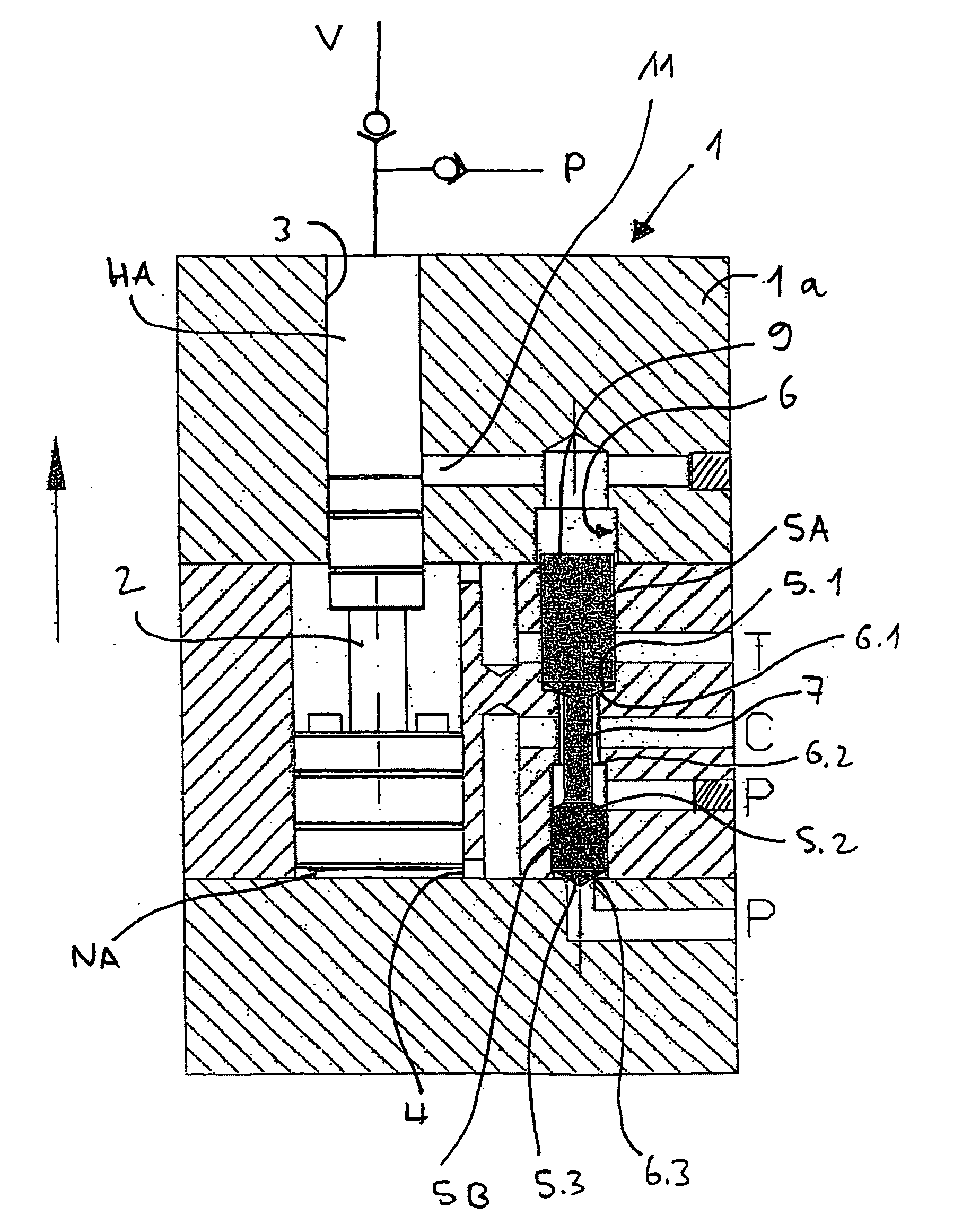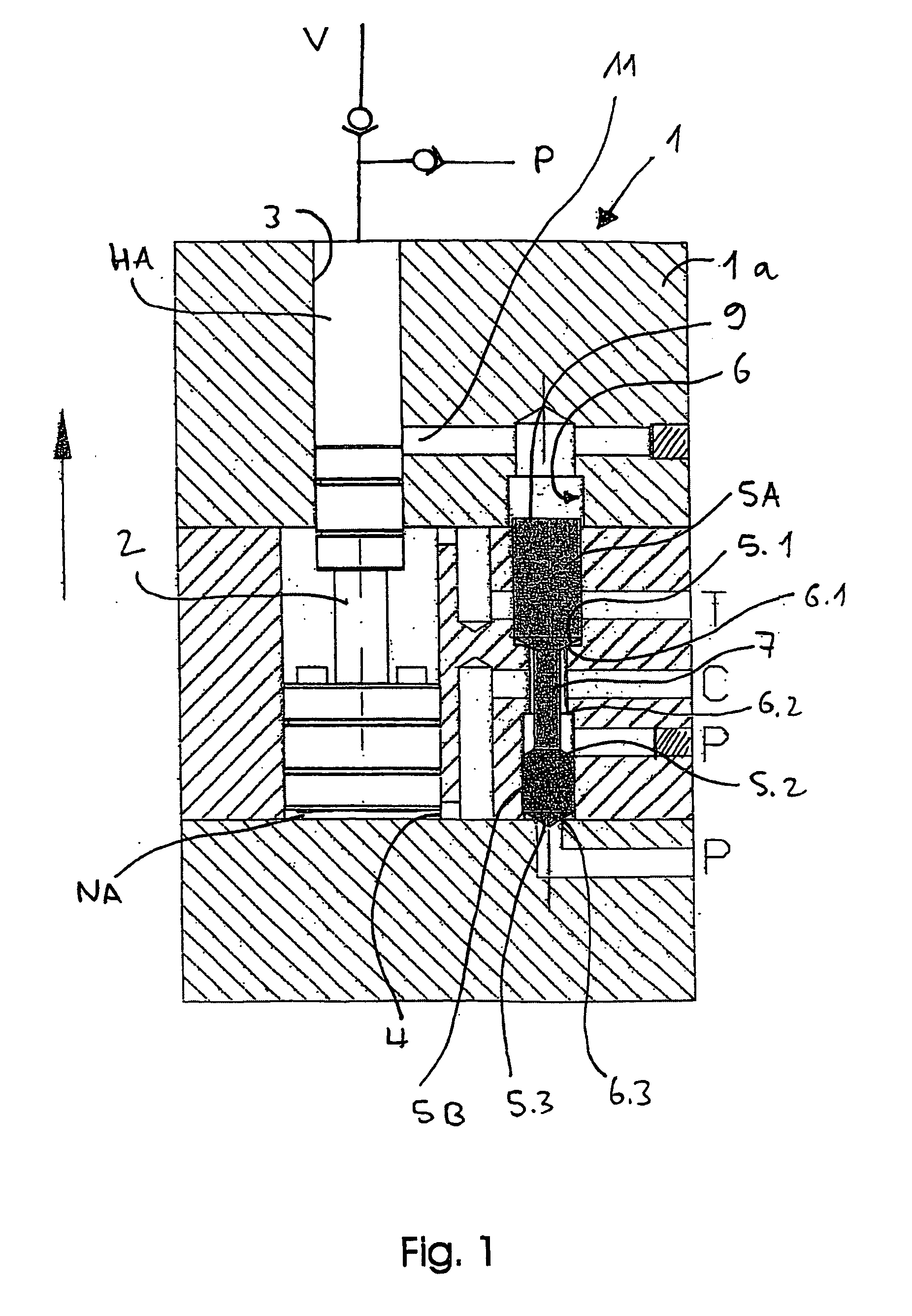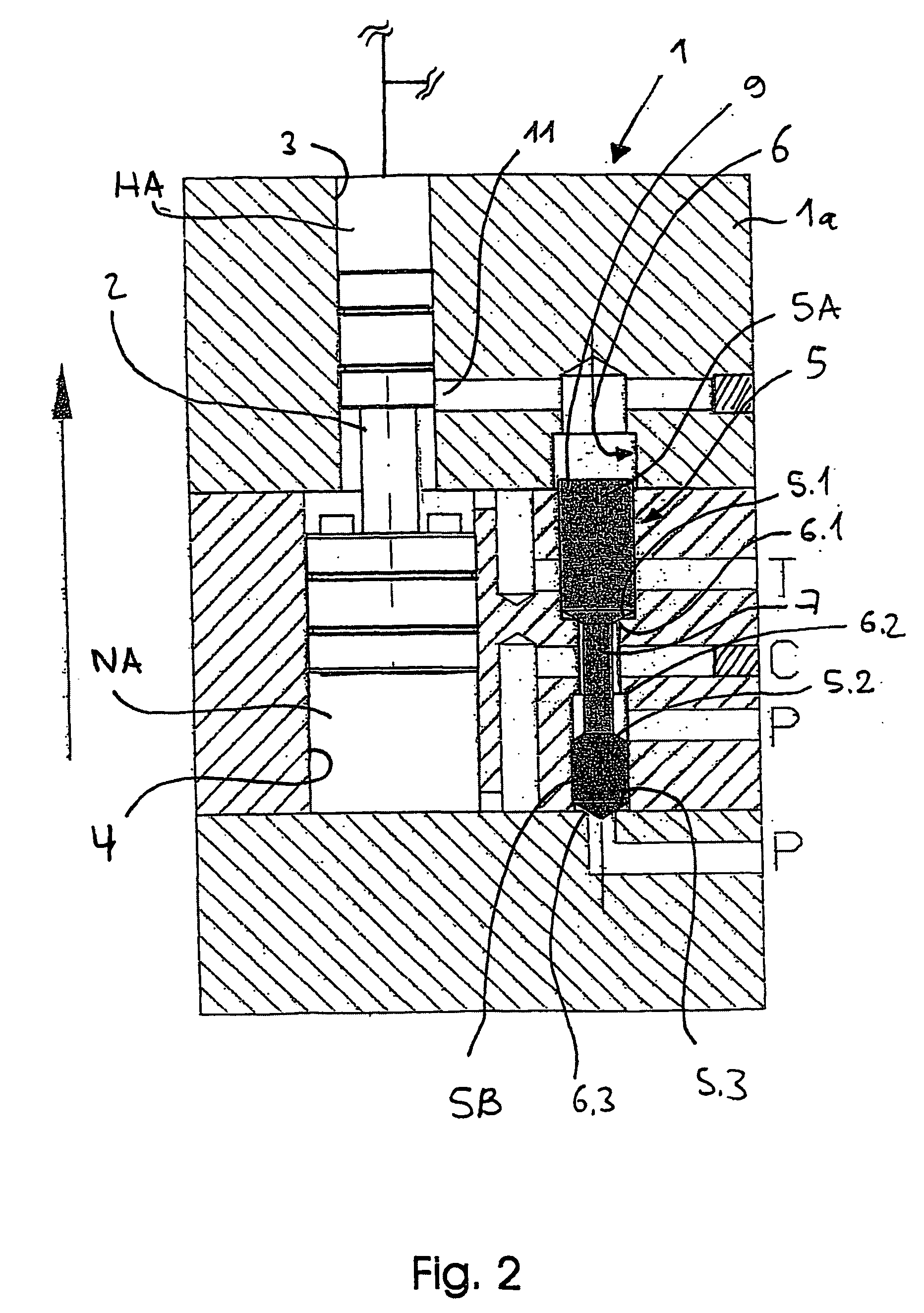Pressure booster with double-seat valve
a technology of pressure booster and double seat valve, which is applied in the direction of multi-way valves, valve arrangements, mechanical equipment, etc., can solve the problems of rattling, excessive cost of manufacture of slide gate valves, and excessive cost of honing of cylinder bores, so as to prevent rattling, save costs, and buy cheap
- Summary
- Abstract
- Description
- Claims
- Application Information
AI Technical Summary
Benefits of technology
Problems solved by technology
Method used
Image
Examples
Embodiment Construction
[0041]FIG. 1 shows an exemplary embodiment of the pressure booster according to the invention as it is preferably used for increasing pressure of hydraulic oil or water for supplying, for example, rescue cutters, clamping devices, high pressure fluid jet cutting tools and hydraulic blasting devices for concrete, rock and the like. The pressure booster is particularly suitable especially for the last purpose of use, because 2000 bar and more are often required on the high-pressure side, which can be realized most easily if a relatively high feeding pressure, which optionally is generated by a pressure booster (cascade system), can already be applied to the pressure booster arranged on the load side. Because where a higher boosting ratio must be realized on the side of the booster piston due to the limitation of the feeding pressure at the last stage, the discharged amount on the high-pressure side either becomes significantly smaller, or the pressure booster becomes significantly lar...
PUM
 Login to View More
Login to View More Abstract
Description
Claims
Application Information
 Login to View More
Login to View More - R&D
- Intellectual Property
- Life Sciences
- Materials
- Tech Scout
- Unparalleled Data Quality
- Higher Quality Content
- 60% Fewer Hallucinations
Browse by: Latest US Patents, China's latest patents, Technical Efficacy Thesaurus, Application Domain, Technology Topic, Popular Technical Reports.
© 2025 PatSnap. All rights reserved.Legal|Privacy policy|Modern Slavery Act Transparency Statement|Sitemap|About US| Contact US: help@patsnap.com



